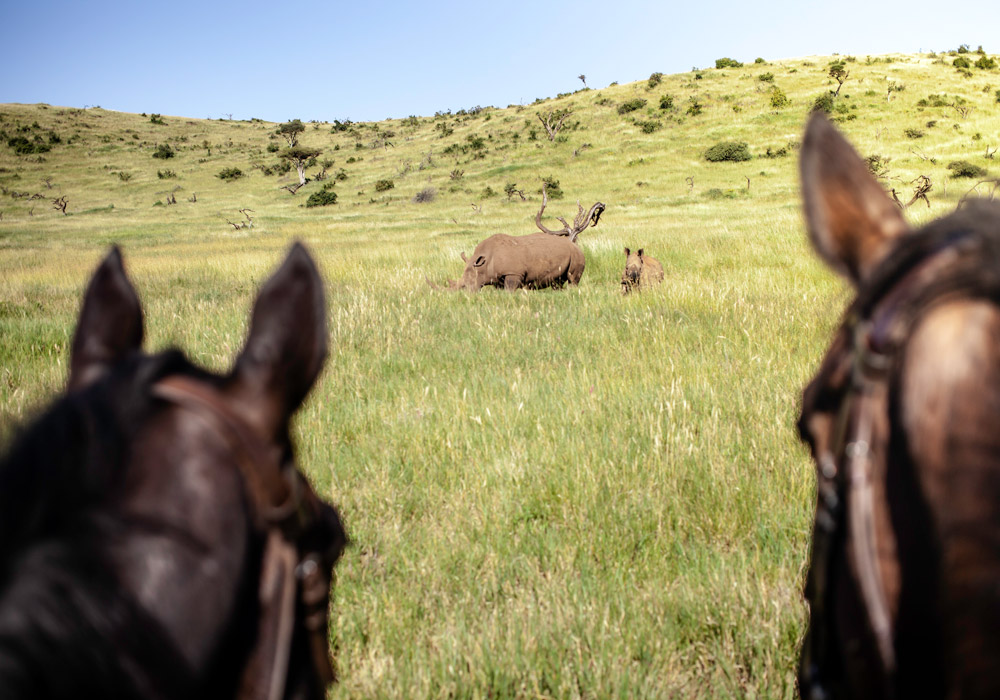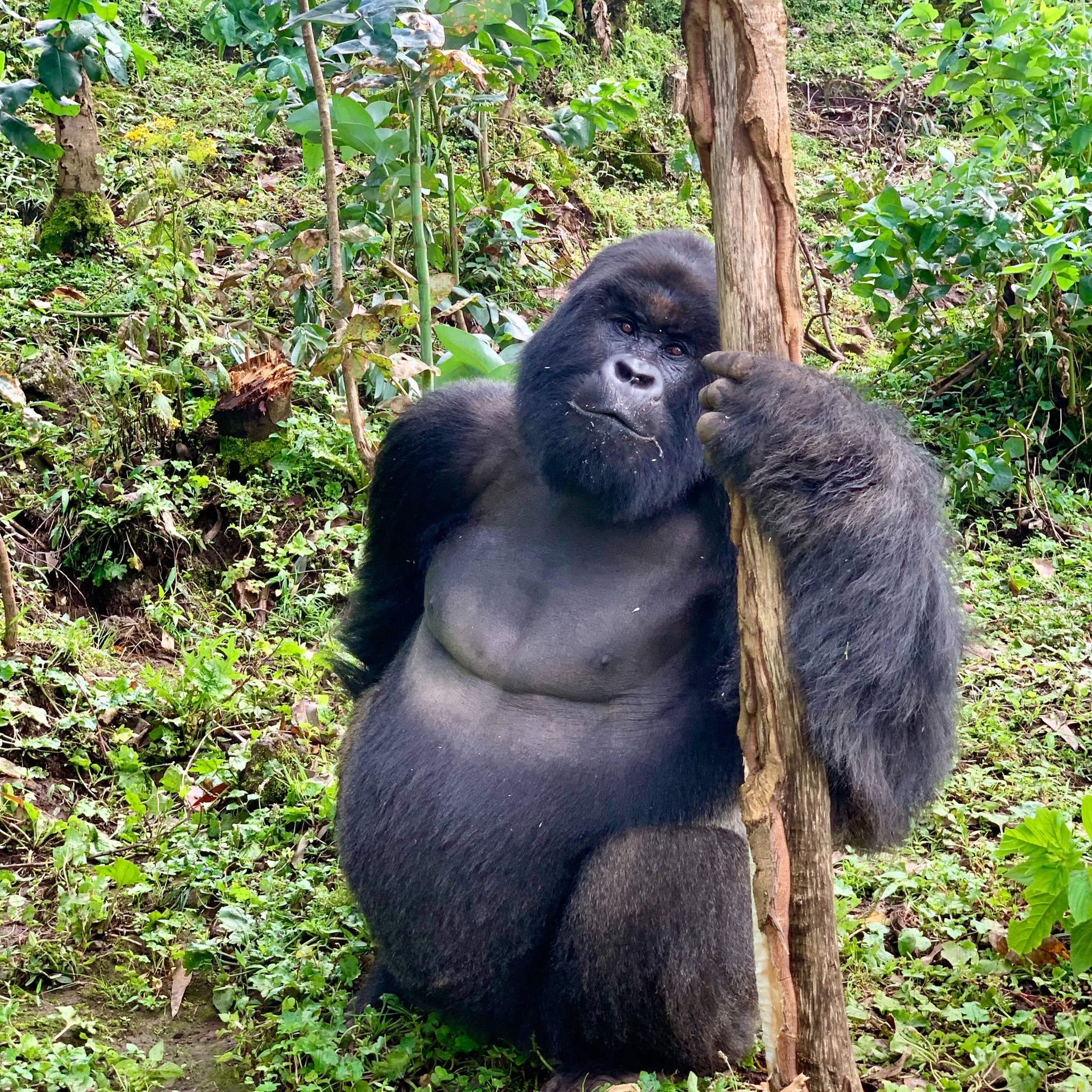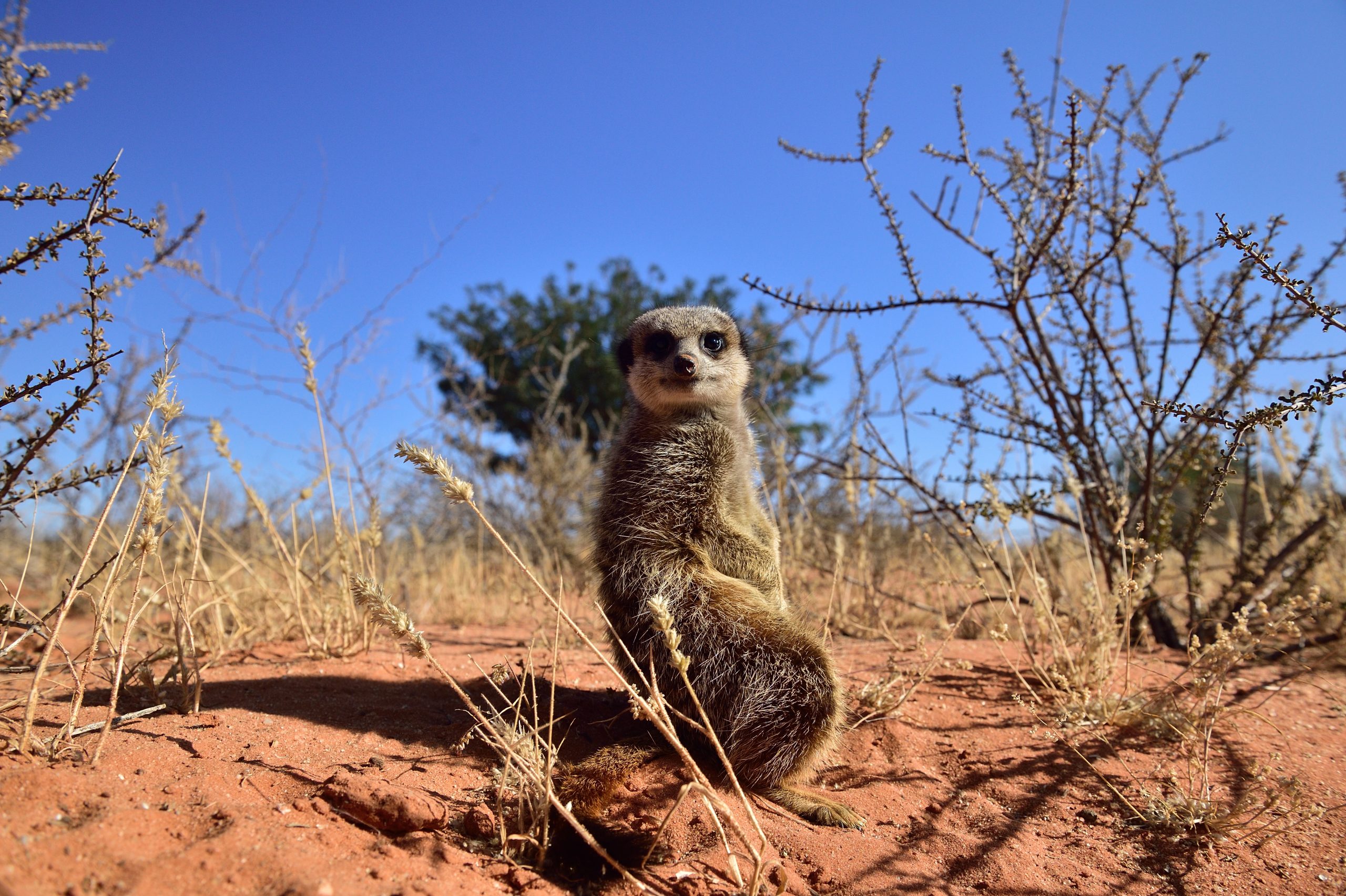Haven’t booked your Easter escape yet? Better hop to it! How does a domestic or regional getaway sound? While you might not spot the Easter bunny himself, plenty of other memorable wildlife encounters await across southern and East Africa – from horseback safaris in Kenya (rated #1 in National Geographic’s 20 of the coolest travel adventures for 2024 round-up) to rhino tracking in Namibia.
Here are our top picks for wildlife-focused experiences in Africa this Easter, and some expert travel tips to ensure a smooth and truly unforgettable journey.
Horseback safaris in Kenya
What to expect
A horseback safari gives you the opportunity to immerse yourself in the magnificent landscape and wildlife of Kenya. You’re able to approach animals quietly and observe their behaviour up close, thanks to the non-intrusive presence of the horses.
Do you need to be a skilled rider to participate? The good news is you don’t! These safaris cater to all skill levels, ensuring a comfortable and safe experience, even if you’ve never ridden a horse before.
Seasonal Highlights
The dry seasons, from June to October and December to March, are ideal for safaris because wildlife is easier to spot.
Expert travel tip: Research the specific safari regions in Kenya and what they’re known for—Laikipia for rhinos and the diverse ecosystem, the Masai Mara for the Great Migration, or Amboseli National Park for elephant viewing against the backdrop of Mount Kilimanjaro. It’ll help you to plan a bespoke experience that ticks all the boxes.

Gorilla trekking in Rwanda
What to expect
They don’t call this wildlife encounter ‘life-changing’ for nothing. Gorilla trekking in Rwanda is a profound experience that takes you into the dense forests of Volcanoes National Park to observe endangered mountain gorillas in their natural habitat.
It’s important to physically prepare for demanding hikes that can last several hours, depending on the gorillas’ location. The park is situated at about 2 500m to 4 000m above sea level and the terrain can be challenging, so a reasonable level of fitness is required, although there are inclusive and more accessible gorilla trekking experiences available. For example, porters or support staff can be arranged to help navigate the terrain. In some cases, specially designed chairs or carriers have been used to assist individuals with mobility issues through the more challenging parts of the forest.
Groups are limited to eight people per gorilla family visit to minimise the stress on the animals, with treks led by experienced guides and trackers. Encounters with the gorillas are limited to one hour, and a respectful distance is maintained to observe their behaviour and interaction. Permits are essential and should be booked well in advance, due to limited availability.
Seasonal Highlights
The best time to go gorilla trekking in Rwanda is during the country’s two dry seasons: mid-December to early February and June to September.
These periods offer easier hiking conditions, as the trails in Volcanoes National Park are drier and less slippery, and visibility is better through the thinner vegetation. Additionally, gorillas often roam at lower elevations, making for shorter trekking distances.
Expert travel tip: Consider arriving a few days early to acclimate to higher elevations, especially if you’re not used to altitudes above 2 500 metres. This can greatly enhance your comfort and stamina during the trek.

Rhino tracking in Namibia
What to expect
Rhino tracking in Namibia allows you to participate in the country’s conservation efforts, particularly in areas like the Palmwag Concession and the Etosha National Park. You can expect guided treks on foot or in 4×4 vehicles led by experienced trackers and conservationists.
The exclusive activity varies in duration, often starting early in the morning to take advantage of cooler temperatures and higher animal activity. Remember to bring your hat, water bottle, and sunscreen, as there’s a good possibility of long walks across rugged terrain under the scorching Namibian sun.
Seasonal Highlights
The best time for rhino tracking in Namibia is during the cooler dry season, from May to October. During these months, temperatures are more comfortable for walking, and the vegetation is sparser, improving visibility for spotting wildlife. Additionally, as water sources become scarce, rhinos and other animals tend to congregate around the remaining waterholes, making it easier to find them.
Expert travel tip: Do your homework on rhino behaviour, the threats they face, and current conservation efforts before your trip – understanding the significance of the animals you’re tracking adds a layer of respect and appreciation for the encounter.
![]()
Turtle conservation in Tanzania
What to expect
Gear up for a hands-on, educational journey, bringing you face-to-face with these most adorable ocean inhabitants. Tanzania, with its stunning Indian Ocean coastline and islands like Mafia and Zanzibar, offers programmes focused on protecting sea turtle nests, monitoring hatching, and sometimes even participating in releasing hatchlings into the ocean.
You’ll work alongside local conservationists and scientists, learning about the challenges sea turtles experience, such as habitat loss and poaching, and the efforts being made to protect these ancient creatures. Expect early mornings and possibly late nights, especially when monitoring nests for hatching turtles, while in the beautiful setting of Tanzania’s beaches.
Seasonal Highlights
You can get close to the turtles year-round, but peak season occurs during the nesting and hatching seasons, from December to May.
Expert travel tip: Do thorough research to find a programme that aligns with your values and genuinely contributes to turtle conservation. Ensure the programme you choose is ethical, prioritising the welfare of the turtles and local ecosystems.

Meerkat safaris in South Africa
What to expect
You’ll really understand the meaning of ‘hakuna matata’ (meaning ‘no worries’ in Swahili) when on a meerkat safari. It’s a wildlife encounter every South African should experience at least once. These safaris typically take place in semi-arid regions, like the Kalahari, and start early in the morning. You’ll hop out of bed just before sunrise to catch the meerkats drowsily emerging from their burrows to bask in the sun before starting their day.
You’ll watch these fascinating creatures up close, without any barriers, as they forage for food, play, and interact with one another. The guides often have long-standing relationships with specific meerkat families, making it possible for humans to observe them at a respectful distance without disturbing their natural activities.
Seasonal Highlights
The best time to go on a meerkat safari in South Africa, particularly in the Kalahari Desert region, is during the cooler months of the year, from April to September.
Expert travel tip: If you’re bringing a camera, remember that using a flash is generally prohibited as it can disturb the meerkats. Equip your camera with a good zoom lens to capture close-up shots without having to approach the animals.

Need some help planning your egg-citing African regional escape? Contact Team GILTEDGE today for guidance and exclusive holiday packages sure to go down a treat.
